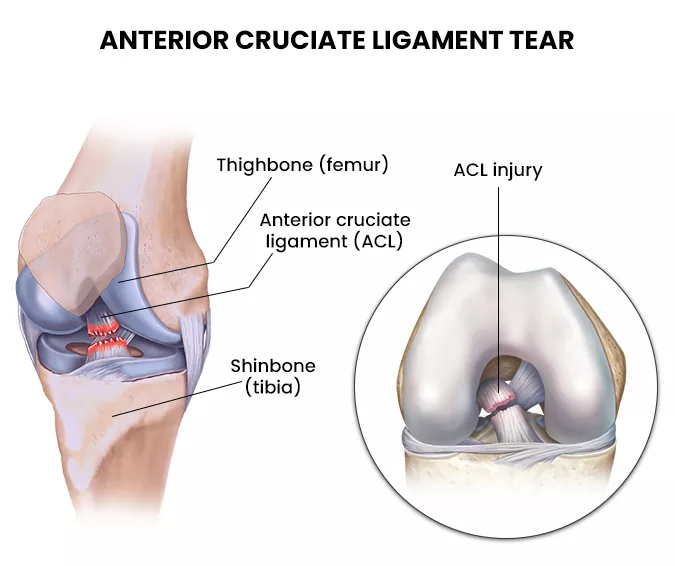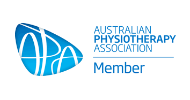ACL Tears

Anterior Cruciate Ligament (ACL) tears are a common injury that affects the knee joint. This injury is prevalent among athletes, especially those involved in high-impact sports, but it can also occur in everyday individuals leading a normal life. The ACL is one of the four main ligaments within the knee that connect the femur to the tibia. When this ligament tears, it can cause significant pain and instability in the knee. In this comprehensive article, we will delve into the causes, symptoms, and treatment options for ACL tears. We will also discuss the importance of physiotherapy in the rehabilitation process and provide a detailed timeline with specific milestones to help individuals understand the recovery process better.
Causes of ACL Tears
ACL tears can occur due to a variety of reasons. The most common cause is a sudden change in direction or a pivoting motion, which puts excessive stress on the knee joint. This abrupt movement can cause the ACL to stretch beyond its limit, resulting in a tear. This often happens during sports activities such as soccer, basketball, or skiing, where rapid, sudden movements are common.
Other causes include direct blows to the knee, such as those experienced during a football tackle or a car accident. Landing awkwardly from a jump, such as when playing volleyball or basketball, can also cause an ACL tear. Additionally, a sudden stop while running or slowing down too quickly can also put undue stress on the knee joint, leading to an ACL tear.

Symptoms of ACL Tears
When an ACL tear occurs, individuals may experience a range of symptoms. These can include:
- Pain: Pain is often the first symptom experienced after an ACL tear. The pain may be sharp or dull and can be felt in the knee joint or surrounding areas. The intensity of the pain can vary depending on the severity of the tear.
- Swelling: Swelling is another common symptom of an ACL tear. The knee may become swollen within a few hours of the injury and feel warm to the touch. This is due to the accumulation of blood and fluid in the knee joint.
- Instability: Many individuals with an ACL tear report a feeling of instability in the knee. This can make it difficult to walk or participate in physical activities. The knee may give out or buckle under the weight of the body.
- Popping Sound: Some individuals may hear a popping sound at the time of injury. This is often followed by immediate pain and swelling. The popping sound is the result of the ligament snapping or tearing.
Treatment Options for ACL Tears
The treatment for ACL tears depends on the severity of the injury and the individual's lifestyle. In some cases, conservative treatment options may be sufficient such as physiotherapy, while in others, surgery may be necessary. Here are some common treatment options:
- Rest and Rehabilitation: For mild ACL tears, rest and rehabilitation may be enough to allow the ligament to heal on its own. This involves avoiding activities that put stress on the knee and working with a physiotherapist to strengthen the surrounding muscles. This conservative approach can take several weeks or months, depending on the severity of the tear.
- Knee Braces: Knee braces can provide support and stability to the knee joint, especially during physical activities. They can help prevent further damage to the ACL and allow individuals to continue participating in sports, albeit at a lower intensity. Knee braces can also help reduce pain and swelling.
- Surgery: In cases where the ACL tear is severe or the individual is an athlete who wants to return to high-intensity sports, surgery may be recommended. During surgery, the torn ligament is reconstructed using a graft from another part of the body or a donor. The graft is then secured in place with screws or other fixation devices. Post-surgery, a comprehensive rehabilitation program is necessary to regain strength and function in the knee.

Can the ACL Heal Naturally Without Surgery? New Research Weighs In
Have you ever wondered if an anterior cruciate ligament (ACL) injury can heal on its own, without the need for surgical intervention? Traditionally, many believe that an ACL rupture means an almost certain trip to the operating room. However, new research from the KANON trial is shedding light on the potential for the ACL to spontaneously heal, offering promising outcomes for patients.
What The Study Revealed
The study closely examined 120 participants of the KANON trial, who had suffered an acute ACL rupture. These participants were divided into two main groups:
- Those who initially underwent rehabilitation and had the option for delayed ACL reconstruction (ACLR) if needed.
- Those who had early ACLR followed by rehabilitation.
MRI scans were conducted to monitor the healing progress. An intact ACL appearance on the MRI was taken as evidence of the ligament healing.
Here's what they found:
- At the 2-year follow-up mark, 30% of the participants who were initially assigned to the optional delayed ACLR group showcased MRI evidence of ACL healing.
- Excluding those who eventually opted for surgery, a whopping 53% of the participants managed solely with rehabilitation exhibited signs of ACL healing on their MRI.
The Cross Bracing Protocol: A Potential Game-Changer for ACL Injuries?
ACL injuries have often been associated with surgery, but recent findings are providing a more nuanced view. We've already explored the promising outcomes of the KANON trial which highlights the potential of ACLs to heal naturally with rehabilitation. Now, let's dive into another fascinating study that introduces a new approach: The Cross Bracing Protocol (CBP).
The Study and Its Objective
The study's primary goal was to assess the MRI evidence of anterior cruciate ligament (ACL) healing and relate it to patient-reported outcomes and knee laxity in patients who suffered an acute ACL rupture. These patients were managed non-surgically using the Cross Bracing Protocol.
What is the Cross Bracing Protocol (CBP)?
The CBP is an innovative method consisting of:
- Immobilizing the knee at 90° flexion using a brace for the initial 4 weeks.
- A progressive increase in the range of motion thereafter.
- The removal of the brace by the 12th week.
- Physiotherapist-supervised, goal-oriented rehabilitation.

Key Findings
Eighty patients, within four weeks of their ACL rupture, were managed using CBP. These were their experiences:
- MRI Results: After 3 months, a whopping 90% (72 out of 80) showcased evidence of ACL healing. The grading was as follows:
- Grade 1 (Continuous ± thickened ligament and/or high intraligamentous signal): 50%
- Grade 2 (Continuous but thinned/elongated): 40%
- Grade 3 (Complete discontinuity): 10%
- Patient-Reported Outcomes: Those with Grade 1 healing reported better scores on the Lysholm Scale and the ACL quality of life (ACLQOL) compared to those with Grade 2 or 3 healing.
- Knee Stability: Remarkably, all participants with Grade 1 healing had normal knee laxity at the 3-month mark, compared to only 40% in the Grade 2-3 healing group.
- Return to Sports: A significant 92% of participants with Grade 1 healing returned to their pre-injury sport, while only 64% in the Grade 2-3 group managed to do so.
- Re-Injuries: Of the 80 participants, 11 patients (14%) re-injured their ACL.
What Does This All Mean?
The Cross Bracing Protocol shows enormous potential. The majority of the patients who underwent CBP displayed ACL healing signs within just three months. Furthermore, the level of ACL healing was directly linked to better outcomes in terms of knee stability, quality of life, and return to sports.
Conclusion
While the early evidence from the CBP approach is promising, further studies and longer-term follow-up are essential. However, the preliminary data certainly adds another layer to our understanding of ACL healing, emphasizing that surgery might not always be the immediate or only answer. As always, decisions related to treatment should be made in consultation with healthcare professionals.








